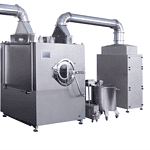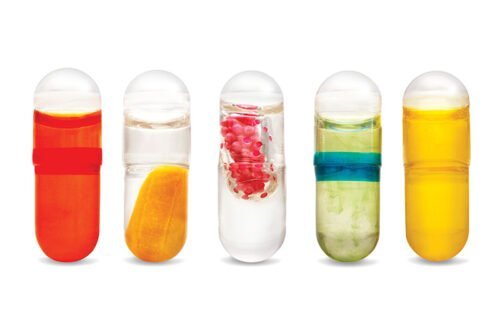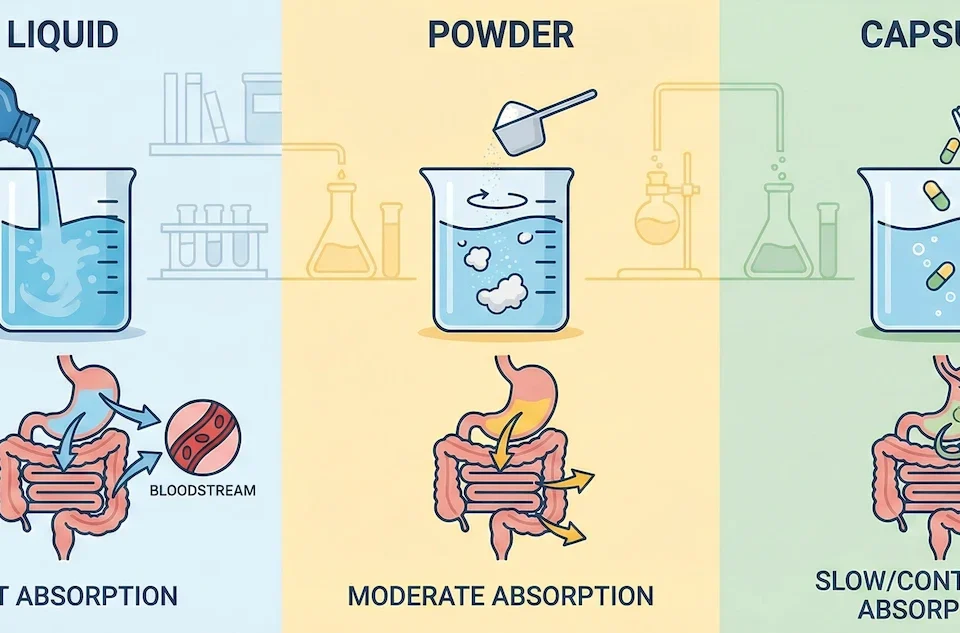
8 Factors You Should Consider Before Buying a Capsule Filling Machine

Tablet Coating Machine: Working, Types & Applications
The Ultimate Guide To Capsule Dosage Forms
In the pharmaceutical world, it’s always extremely important to ensure that any medical products are shared effectively. That means a lot of the time, drugs need to be shared in the form of capsules. It’s easy to see why, because capsules provide an external shell to protect the drug and maintain its consistency.

A lot of the time, capsules are versatile, very easy to adapt to your needs, and they can deliver an exceptional medium for even the most sensitive drugs. Learning the capsule dosage form is crucial here, though, because you want to know how to deliver these drugs in a capsule properly. There are certain limitations, depending on the medical compounds in the capsule and the form that they have.
What is the Capsule Dosage Form?
Capsules are a unique dosage form that’s solid and they are basically a shell enclosing the drug. Depending on the medical product, the shell can be soft or hard. Regardless of the situation, capsules will always be edible, and they can contain a variety of substances. Most of the time, they will embed granules or powders, but some of them will even contain liquids, depending on the situation.
Additionally, the size of capsules will vary quite a lot, they can be oblong, oval, or in unique shapes. That will differ based on the compounds that need to be added into the capsule and how much dosage is necessary. Oval or oblong shapes are preferred because they make it easy for the capsule to be ingested.
Usually, capsule manufacturers will rely on the use of capsule filling machines. There are automatic (semi or fully automatic), but also manual capsule fillers. Opting for automatic machines is better since they can speed up the production speed, while also conveying a very good return on investment.
Capsule dosage form advantages and disadvantages
What should you consider when it comes to the capsule dosage form? What upsides or downsides are there when it comes to this medical product format? Most of the time, the capsule dosage form comes with a major advantage because it provides a more comprehensive result and a rewarding experience.
The benefits of using the capsule dosage form
- The first major upside is that capsules are easy to ingest. They are edible, and usually, they won’t have any taste. Plus, the benefit is that a lot of these medical products tend to have a very specific smell that can be perceived as bad. And with the capsule, you get to keep that smell contained. A lot of patients appreciate capsules for that reason alone.
- As we mentioned earlier, capsules offer a great barrier against moisture, light, and a medium that could destroy or change the properties of that medical product. However, since the compound is contained inside a capsule, you don’t need to worry about the product being less effective.
- Thanks to the reason above, capsules also offer medical products a longer shelf life. Since there’s no exposure to the elements or chemicals that could change their properties, these medical products will last for a long time.
- There’s another benefit here, in the form of capsules being available in a variety of sizes, shapes, and colors. So there’s still potential for branding, should you need such a thing.
- Due to their size, it becomes easy to have a set of capsules in a relatively small container. That means people can still have access to the medicine they need while also enjoying portability and not worrying about any downsides.
- You get to have a consistent dosage, and it’s also fully customizable. Not only that, but you get a controlled release, too, since medication within capsules gets slowly released.
The downsides of capsule dosage forms
- Capsules are not ideal for children, they can be difficult to swallow for some adults as well.
- Due to their nature, capsules are not exactly something you could crush or split, like regular medicine.
- Capsules won’t always be the right fit for any formulation. That’s the reason why only some medical products will fit capsule dosage, but not all.
- There is a risk of tampering; even if it’s small, it still exists. Although there are smaller risks when compared to regular medicine, so keep that in mind.
- The shelf life is limited, but in the case of capsules, it still tends to be a lot longer when compared to other medical products.
Capsule Dosage Form Types
One of the things we need to keep in mind is that capsule dosage forms will vary when it comes to size and type. The main types of capsules used for medical products include:
Controlled release capsules
As the name suggests, these capsules have a controlled release, which means the capsule content doesn’t get released all at once. That way, you get more control over how everything is released, and it’s a safer way to ingest more complex medication. It’s the most popular capsule type for things like blood pressure medication, but also pain relief products, or antidepressants. Having the right dosage can be difficult, but here, you have way more control, and the results as a whole can be better because of it.

Delayed release capsules
In the case of delayed-release capsules, these will not release the medicine right away. It’s a good option to consider due to their tougher coating. A lot of the time, you need a way to protect the medical compound from powerful stomach acids. And that’s where having a delay in medication release can be the optimal approach.

Extended-release capsules
You have situations when you need the capsules to have a long-term effect. That can be ideal when you want to lower side effects and keep symptoms under control. These particular capsules are made with a variety of polymers, which ensure the medication is released at a steady rate but slowly.

Enteric-coated capsules
As we mentioned earlier, stomach acids can be very challenging to deal with for capsules. These capsules are made with an enteric coating, which helps prevent stomach irritation while also protecting the drugs found within the capsule. There’s a special liquid coating added onto the capsules; they are dried and then everything is curated.

Soft capsules
Unlike other capsules, these are a one piece capsule that gets made using gelatin and a few other compounds like sorbitol or even glycerin. Softgel capsules are important because they make it easier to integrate oily substances. They are harder to produce and more expensive. However, they have a very smooth texture and can be easier to swallow.

Hard capsules
Hard capsules are the opposite, they have a rigid shell, and they stick together to ensure that the medication is enclosed with great safety. There are times when plasticizers need to be added in order to maintain that durable, hard shell. You have the liquid added into a mold in order to create the capsule. You then use a capsule filling machine to add the right medication dosage into the capsule, and then everything is sealed.

Conclusion
These are the main capsule dosage forms, and each has its use case. Some of them can be easier to create, others are more expensive. But in the end, they are an ideal option to help protect the medication while also conveying exceptional quality and value for money. Rest assured that capsules are very dependable, and having the ability to control how the medication is released makes them incredibly powerful!
Recommended reading:
- https://www.uomus.edu.iq/img/lectures21/MUCLecture_2021_112439668.pdf
- Ascendiapharma, S(April 14, 2022). Capsule Formulation Development: From Dosage Forms to Filling. https://ascendiapharma.com/newsroom/2022/04/14/capsule-formulation-development
- https://www.uomustansiriyah.edu.iq/media/lectures/4/4_2024_03_15!07_21_23_AM.pdf
- Rampurna P Gullapalli 1, Carolyn L Mazzitelli 2. (Epub 2017 Feb 14). Gelatin and Non-Gelatin Capsule Dosage Forms. https://pubmed.ncbi.nlm.nih.gov/28209365/




